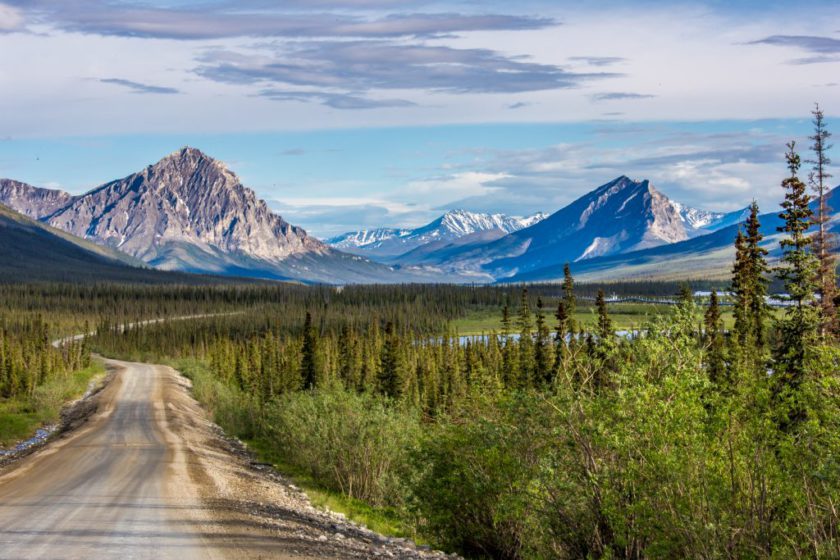Warming in the Arctic is bringing fundamental changes. Everything is being impacted to such a degree that the entire biophysical system is shifting toward an “unprecedented state,”. That’s the conclusion of a new study that has just been published by an international team of researchers.
What is happening?
Distilled from here …
- Arctic forests are turning into bogs as permafrost melts beneath their roots.
- The icy surface that reflects the sun’s radiation back into space is darkening and sea ice cover is declining.
- Warmth and moisture trapped by greenhouse gases are pumping up the water cycle, swelling rivers that carry more sediment and nutrients to the sea, which can change ocean chemistry and affect the coastal marine food chain.
- The rate at which warming is happening is 2.4 times faster than the rest of the Northern Hemisphere
Study: Key indicators of Arctic climate change: 1971–2017
What exactly is this paper doing?
We know that rising concentrations of greenhouse gases are driving widespread changes in global physical climate and its ecosystems. What this paper does is to assemble nine diverse observational records that serve as key indicators of climate and ecosystem status. It covers 47 years worth of data.
Their review of physical changes is accompanied by a discussion of links with the biological systems. They present and discuss each indicator in turn and where possible, discuss ecosystem impacts.
What are the 9 Indicators?
Basically these …
What are their key Messages in the paper?
1 – Arctic air temperature: The annual average air temperatures 1971–2017 increased 2.7 °C, at 2.4 times the rate of the Northern Hemisphere average. The 3.1 °C increase in the cold season (October–May) is the largest by season, 2.8 times the rate of the Northern Hemisphere cold season average. Arctic warm season (June through September) temperatures increased 1.8 °C, 1.7 times the rate of Northern Hemisphere summer.
2 – Alaskan permafrost: New record-high annual average temperatures in the upper 10–20 m of the ground have been observed at many permafrost observatories. At 20 m depth for three North Slope of Alaska sites (West Dock, Deadhorse and Frankiln Bluffs) they find a 2.5 °C permafrost temperature increase in the past 47 years.
3 – Arctic hydroclimatology: Observations from land and coastal stations indicate widespread increases in humidity, low-level clouds, precipitation, rainfall (at the expense of snowfall), river discharge, sedimentation and delivery of organic matter to the Arctic ocean, freshening of the Arctic Ocean, and reductions in snow cover, all of which are controlling factors in terrestrial and probably marine ecosystems.
4 – Snow cover: Arctic snow cover is responding to multiple environmental drivers and feedbacks (such as warming, increased moisture availability, changing atmospheric circulation, changing vegetation, increased frequency of winter thaws, rain-on-snow events). There is widespread multi-dataset evidence of declining snow cover over the Arctic with the annual duration of snow on the ground shortening by 2 to 4 days per decade with the largest negative trends occurring at high latitudes and elevations consistent with AA of warming and enhanced albedo feedbacks.
5 – Arctic Ocean sea ice: Sea ice extent and volume are continuing their downward trends. The past decade had record-low extent in summer 2012, and it is the lowest decade ever in satellite era beginning in the 1970s. These are unprecedented change in Arctic sea ice, in both the rates and magnitude of change in extent, area, thickness, and spatial distribution. Along with Arctic sea ice decline, there is emerging evidence for a loss of biodiversity in sea-ice habitats.
6 – Arctic land ice: In the 47 year period (1971–2017), the Arctic was the largest global source of sea-level rise contribution, 48% of the global land ice contribution 2003–2010 and 30% of the total sea-level rise since 1992. Temperature effects are dominant in land ice mass balance; precipitation represents a source of either damping or amplifying feedbacks respectively via snow and rain.
7 – Arctic region wildfires: Drier conditions and an increase in maximum air temperatures contribute to increased fire risk. Fire clearly causes dramatic short-term changes in vegetation and ecosystem function. The fire-climate relationship is related to increasing lightning ignition that is shown to correlate with air temperature and precipitation, thus linking Arctic warming with the liklihood for increased fire.
8 – Tundra and terrestrial ecosystems: Arctic greening has been observed across tundra ecosystems over the past 30 years. The increase of Arctic tundra average and maximum NDVI both correlate with Arctic warm season air temperature with high confidence.
9 – Carbon cycling: The changes in the global climate system are already affecting biogeophysical energy exchange and transport within the Arctic. The response of the carbon cycle in northern high latitude regions is influenced by terrestrial carbon exchange and by coupling between the land and ocean, which has worldwide consequences. Importantly, there are substantial organic matter stocks of carbon in the Arctic contained in permafrost and within the methane hydrates that exist beneath both subterranean and subsea permafrost of the Arctic, all of which can affect carbon cycling. Observational data indicate increased tundra ecosystem CO2 uptake during the growing season. Further temperature increase will affect tundra CO2 and CH4 emissions, their ratio being dependent on local hydrology and permafrost thaw.
What is the key conclusion?
This one sentence below from the conclusions section sums it all up. It sounds overly dramatic, and yet it is not an opinion, it is an evidence-based fact …
The Arctic biophysical system is now clearly trending away from its previous state and into a period of unprecedented change, with implications not only within but also beyond the Arctic.
Study Author Comments
Jason Box, the lead author, published the following summary of the paper on YouTube, He does the voiceover …
